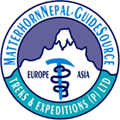Medical Kits – Preparation & Selection
Large expeditions carry serious medical packs and try to foresee/prepare for normal contingencies typical of such undertakings. In the world of normal outdoor activities it can prove prudent to consider whether or not an individual should carry certain items to address common small injuries.
Consider the following when planning:
- Medical expertise of the intended user
- Special environmental considerations
- Length of trip
- Distance from medical facility
- Availability and type of rescue assistance
- Number of people traveling
- Pre-existing illness
- Weight and space limitations
- Base camp
Container:
- Choose an easily recognizable container to speed access, e.g. red or orange container
- Label it as the “Medical Kit” and or place a cross on it (a universal medical symbol)
- Choose a water-proof container
- Place items (e.g. Band-aids or Tylenol) into separate clear ziplock bags
- Organize items and make them easy to identify
- Use water-proof items if available
- Do not make the kit too big or bulky (you can’t bring it all)
- be smart when choosing what items to bring (big, bulky kits are often left behind)
- A personal medical kit can fit into a single ziplock bag if necessary
- **Note- a medical kit in your car containing everything for emergency is useless when you are a 5 miles down the trail
Medications:
- Tylenol/Motrin: fever, muscle aches, minor pain
- Sudafed/Actifed: runny nose, congestion
- Benadryl: allergies, itchy rash
- Dramamine: motion sickness
- Cortizone: insect bites, itchy rash, poison oak
- Lotrimin: fungal infection, e.g. athlete’s foot
- Sunscreen (SPF 30 minimum): sun protection
- Lip balm (SPF 30 min.): lip protection
- DEET 30% (adults): prevents insect bites
- DEET 10% (children): prevents insect bites
- Mylanta: stomach upset
- Imodium: diarrhea
- Rehydralyte, Oralyte, Sport drinks & gels: for dehydration
- Glucose paste: for low blood sugar/insulin shock
- Epi-pen: bee allergy (available by prescription) – epinephrine injection
- Personal medications: insulin, asthma inhalers . . .
Equipment:
- Wound care and bandage material (a store bought First Aid kit should contain this material)
- Bandage scissors
- Splinting material
- Tweezers
- Medical gloves
- Notebook and writing utensil
- Emergency dental kit (Super glue)
- Duct tape: it has many uses
- Communication: cell phone, radio. . .
- First aid book
Special environment considerations:
Altitude Illness
- Tylenol: for headache of acute mountain sickness (AMS)
- Compazine : for nausea associated with AMS
- Oxygen: for treatment of all altitude sickness
- Diamox or Acetazolamide: prevention and treatment of AMS
- Nifedipine: for high altitude pulmonary edema (HAPE)
- Dexamethasone: AMS/high altitude cerebral edema (RACE)
- Furosemide: used cautiously when treating HAPE or HACE
- Gamow Bag: simulates low altitude, used for HAPE/RACE
- Definitive treatment is descent!
Heat Illness
- Extended temperature range thermometer
- IV supplies and IV fluids
- Chemical ice packs
Snowblindness
- Opthalmic anesthetic e.g. proparacaine
- Fluorescein stain
- Cycloplegic agent e.g. cyclogel
- Opthalmic antibiotic ointment or drops
- Spare sunglasses with side shields or goggles
- Narcotics (e.g. Vicodin) to treat pain
- Eye patches

